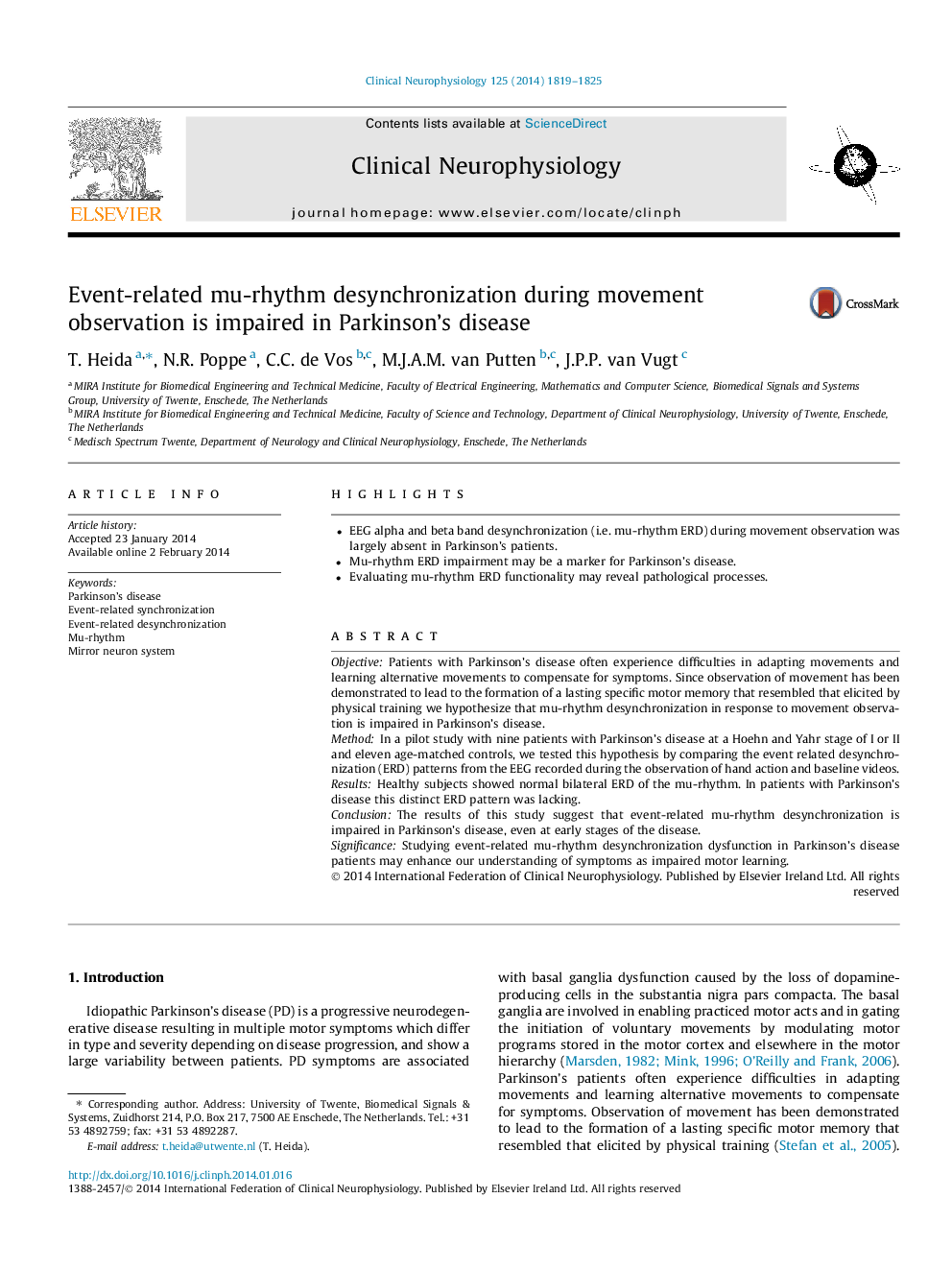| Article ID | Journal | Published Year | Pages | File Type |
|---|---|---|---|---|
| 3043180 | Clinical Neurophysiology | 2014 | 7 Pages |
•EEG alpha and beta band desynchronization (i.e. mu-rhythm ERD) during movement observation was largely absent in Parkinson’s patients.•Mu-rhythm ERD impairment may be a marker for Parkinson’s disease.•Evaluating mu-rhythm ERD functionality may reveal pathological processes.
ObjectivePatients with Parkinson’s disease often experience difficulties in adapting movements and learning alternative movements to compensate for symptoms. Since observation of movement has been demonstrated to lead to the formation of a lasting specific motor memory that resembled that elicited by physical training we hypothesize that mu-rhythm desynchronization in response to movement observation is impaired in Parkinson’s disease.MethodIn a pilot study with nine patients with Parkinson’s disease at a Hoehn and Yahr stage of I or II and eleven age-matched controls, we tested this hypothesis by comparing the event related desynchronization (ERD) patterns from the EEG recorded during the observation of hand action and baseline videos.ResultsHealthy subjects showed normal bilateral ERD of the mu-rhythm. In patients with Parkinson’s disease this distinct ERD pattern was lacking.ConclusionThe results of this study suggest that event-related mu-rhythm desynchronization is impaired in Parkinson’s disease, even at early stages of the disease.SignificanceStudying event-related mu-rhythm desynchronization dysfunction in Parkinson’s disease patients may enhance our understanding of symptoms as impaired motor learning.
